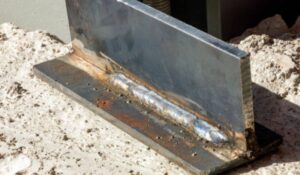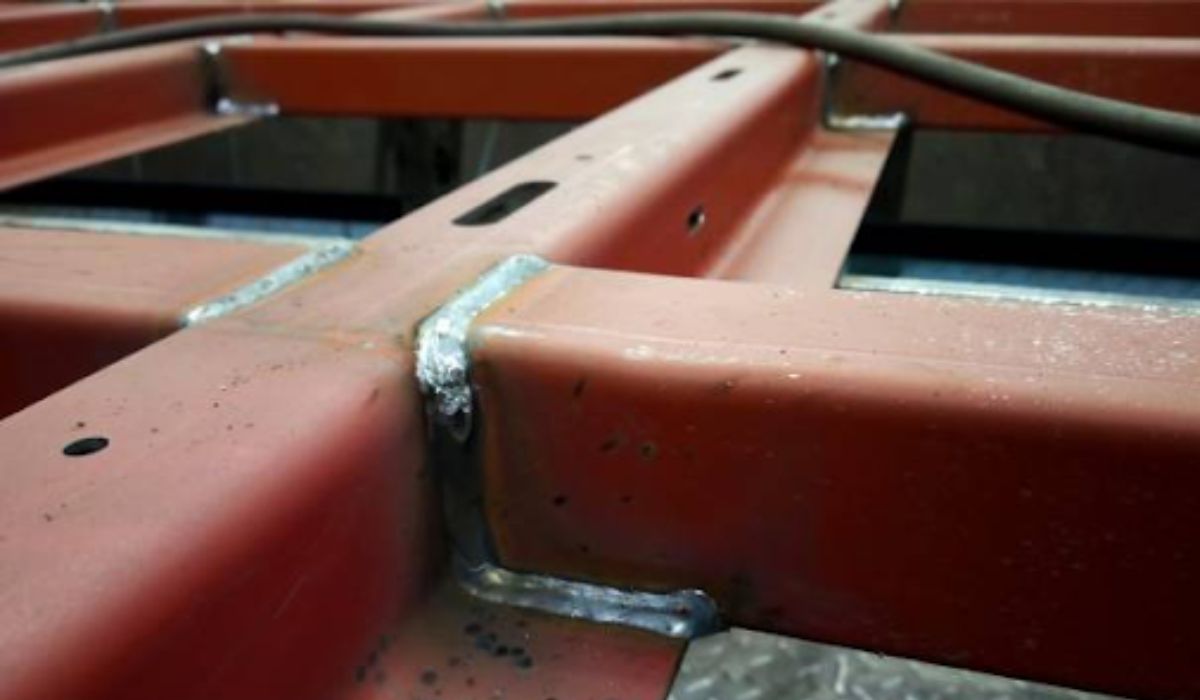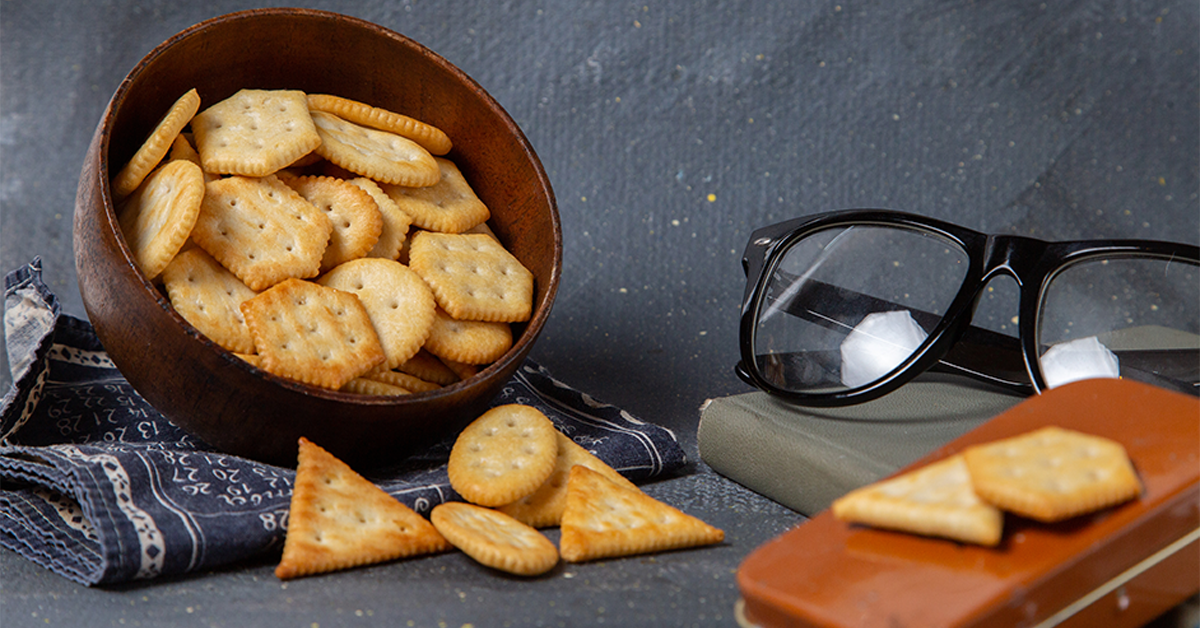Welds play a critical role in ensuring the integrity of countless structures. They provide the necessary strength to keep metal pieces in place. But have you ever wondered just how much weight those welds can support? You must bear in mind that the strength of a weld isn’t just about the metal and technique; it’s about ensuring safety and reliability in whatever you’re building. Continue reading this article to learn the factors that determine how much weight a weld can hold and what you need to consider to make sure your welds are strong enough for your desired task.
What Is Tack Weld And How Does It Work?
Tack welding is a crucial technique in the welding process, often serving as the foundation for more permanent welds. Essentially, a tack weld is a small, temporary weld used to hold parts of a workpiece in place before the final welding. For instance, when assembling a metal frame in metal welding, you wouldn’t want the pieces to shift or move around while you’re trying to complete the weld. Tack welds solve this problem by providing just enough strength to keep the pieces aligned. This allows you to focus on creating precise, quality final welds.
How Does Tack Welding Work?
The process of tack welding is relatively straightforward but demands precision. To begin, a welder makes short, intermittent welds at key points along the joint. Experts evenly space these weld to distribute the holding force across the entire workpiece. The key is to apply just enough heat and filler material to join the pieces without compromising the overall structure.
Here’s a detailed breakdown of how you can tack weld:
Preparation
Before you start welding, it’s important to clean the surfaces where you’ll apply the tack welds. Dirt, rust, or oil can weaken your welds, so make sure the metal is spotless. Then, align the metal pieces carefully. You want them to fit together just right. You can use clamps or magnets to hold them steady. A good fit at this stage makes for a stronger final weld.
Setting the Parameters
Next, adjust your welder’s settings to match the thickness of the metal you’re working with. Thicker metals require more power, so you might need to increase the amperage. You must pay attention to voltage settings, too. The right voltage ensures the weld penetrates properly, giving you a strong weld.
Applying the Tack Welds
Here, start by placing small welds at key points along the metal seam. These quick, precise welds hold everything in place before the final weld. Space your tack welds evenly along the joint. This prevents the metal from shifting or warping as you work, making your final weld more accurate.
Inspection
Once your tack welds are in place, take a moment to inspect them. Make sure they’re holding the metal securely. If one looks weak, go ahead and re-weld it. It’s best you fix it immediately rather than have issues later. A thorough visual check can save you time and frustration down the road. So if something doesn’t look right, don’t hesitate to touch it up.
Final Welding
With the tack welds securely in place, you’re ready to move on to the final welding. These tack welds, which act as guides, keep everything aligned as you work. When you apply the final weld, make sure it completely covers the tack welds. This will create a smooth, strong joint that holds up under pressure.
How Much Weight Can Welds Hold?

Welds can hold a surprising amount of weight, but the exact capacity depends on several factors. This includes the type of weld, the materials used, and the conditions of the weld. Generally, a properly executed weld can be as strong as or even stronger than the base materials themselves. For instance, in structural applications, welds often support thousands of pounds of load, ensuring the integrity and safety of everything from bridges to skyscrapers.
However, it’s crucial to understand that not all welds are created equally. A combination of factors determines the strength of a weld, and knowing these can help you achieve the best results for your project.
Key Factors that Affect Weld Strength
There are several factors that influences the final strength of a weld. So whether you’re fabricating machinery, or working on an art piece, understanding these key factors helps ensure that your welds are as strong as you need them to be.
Check the factors that affect weld strength below:
Type of Weld and Joint Design
The type of weld you choose and how you design the joint significantly impact the weld’s strength. There are different welding techniques, such as butt, fillet, or lap welds, and each has unique characteristics that influence how much load they can bear. For instance, a fillet weld might be ideal for connecting two surfaces at a right angle, offering a sturdy connection. Still, it may not be as effective in scenarios requiring smooth, continuous seams.
On the other hand, a butt weld, which fuses two pieces end-to-end, is often used in structural applications where maximum strength is needed. The design of the joint itself also matters. A well-designed joint can evenly distribute stress across the weld, and this will help reduce the risk of failure.
Material Properties
The metal material you intend to weld also determines the overall strength of the weld. Metals like steel, aluminum, and titanium each have different properties that impact how they respond to welding. For instance, steel is generally strong and durable, making it a popular choice for heavy-duty applications.
However, it’s essential to consider the grade of steel, as some grades may be more brittle or less resistant to fatigue. More so, aluminum, while lightweight and corrosion-resistant, requires careful handling to avoid issues like porosity or cracking. For this reason, you must match the weld material with the base materials to maintain strength and prevent weaknesses at the joint.
Welding Technique
Whether using MIG, TIG, stick, or another welding method, note that each has its strengths and limitations. TIG welding for instance, is known for its precision and ability to produce clean, strong welds, making it excellent for thin materials. However, it requires more skill and time.
On the flip side, MIG welding is faster and easier to learn, making it ideal for larger projects. However, it might not offer the same level of control as TIG welding. Stick welding, often used in outdoor or heavy-duty applications, also provides strong welds. However, due to its manual nature, it may be challenging to achieve strong welds. Above all, choosing the right technique for your project ensures that your resulting welds can withstand the expected loads.
Heat Input and Control
The amount of heat applied during welding and how you control this heat significantly affect weld quality. Excess heat can weaken the metal, causing it to lose its structural integrity. At the same time, too little heat might not penetrate enough to create a strong bond.
That said, controlling the heat input, particularly in materials prone to warping or distortion, remains essential for producing strong, quality welds. Techniques like preheating can better manage heat distribution and prevent common issues like cracking or incomplete fusion.
Welder’s Skill Level
You’ll find that even the best equipment and materials can’t compensate for a lack of experience or technique. A skilled welder knows how to adjust the settings, choose the right filler material, and apply the correct technique to achieve a strong, durable weld. They also understand how to inspect the weld for defects, ensuring that it meets the necessary standards for strength and quality. Thus, investing in training and experience goes a long way in producing welds that can hold significant weight.
Conclusion
To wrap things up, determining how much weight welds can hold involves understanding the type of weld, the materials you intend to join the welding technique, and the overall design of the joint. Tack welds, while essential for alignment, are not designed to hold heavy loads. Full welds, however, can support significant weight when done correctly, taking into account material properties, heat control, and joint design. By understanding these elements, you can better gauge how much weight your welds can safely hold and ensure the safety and durability of your projects.
At Zintilon, we’re committed to providing top-tier welding solutions tailored to your specific needs. Our expert team is ready to help tackle your complex welding projects, ensuring precision in every weld. Reach out today and discover how our expertise in weld on metal can meet your toughest challenges.











